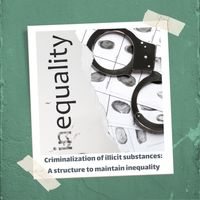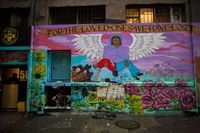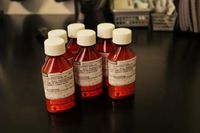The movement for the safe supply of illicit substances in Vancouver's Downtown Eastside (DTES) was founded on saving lives and harm reduction, drawing inspiration from critical race theory, feminism, and decolonization discourses. Safe supply and, more broadly, the harm reduction movement is concerned primarily with ending the War on Drugs and accidental drug poisoning deaths that are increasing at an exponential rate in British Columbia. Drug criminality in Canada is deeply rooted in racist ideologies, further solidified at the turn of the century when former Prime Minister Mackenzie King passed the Opium Act of 1908. In passing this overtly racist act, The Canadian government sought to further ostracize and criminalize Chinese immigrants because smoking opium was part of their culture.
‘Safe Supply’, as it is known, refers to the provision of an unadulterated regulated supply to an individual of their drug of choice. This has many benefits, including eliminating exposure to dangerous harms caused by cuts or buffing agents mixed into the street supply. For example, in most countries around the world, we have access to government-regulated supplies of alcohol. During alcohol prohibition, numerous harms arose to individuals who consumed ‘bootleg alcohol’ leading to a sharp increase in cases of alcohol poisoning and other harms. Alcohol prohibition was subsequently overturned, and today, we do not mandate that heavy drinkers go into treatment, We must learn from the past. As such, it is also crucial that the provision of a safe supply must not come with a caveat that one must attend treatment after a set amount of time.
The DTES has a long history of drug user movements, and the crusade for safe supply recently gained mainstream attention in April 2021 — five years after the BC Provincial Government declared the opioid epidemic a public health emergency. At the time this was written, drug user organizations, DULF (Drug User Liberation Front), VANDU (Vancouver Area Network of Drug Users), BCAPOM (BC Association of People on Opiate Maintenance), and CPDDW (Coalition of Peers Dismantling the Drug War) have put on four events to distribute unadulterated cocaine, heroin, and methamphetamine to drug user groups in the DTES. The purpose of these events is not only to raise awareness and prevent deaths in the community but also to show what is possible when drug users work together and push for change. The experiences at the centre of this movement are those of stigmatization, racism, wealth inequality, neglect, colonialism, misogyny, and abuse, among other forms of oppression and exploitation. For some people, the trauma brought on by these experiences has led to self-medication through drug use. The movement has grown from a deviant act to having garnered mainstream support. Vancouver City Councillor Jean Swanson actually assisted in handing out the safe supply of cocaine, heroin, and methamphetamine.
Tracing the roots of drug criminalization in Canada shows a long trail of systemic racialized social control. The Opium Act of 1908 drew the attention of the policymakers in the United States, who acknowledged Canada's stance on narcotics and aimed to replicate this in their country. Research has identified that Canada’s first drug policy laws targeted Chinese Canadians and were fuelled by race and gender tensions. Such tensions persist today now that we are seeing the safe supply movement gain traction. It is crucial that safe supply be a drug user and peer-led movement to preserve life. At the heart of the safe supply movement is a diverse group of people who use drugs (PWUD).
The continued criminalization of drugs disproportionately impacts racialized and marginalized groups. Each inequality and injustice perpetrated to people living in Canada has created trauma that has led some people to use drugs. Drug prohibition in Canada encompasses the systemic injustices committed by the government. Providing PWUD with a safe supply of drugs will save their lives and address the results of decades of damage done by the Canadian government. As established, Chinese Canadians were the original targets of drug policy in Canada.
Additionally, the policies written in response to the “crack epidemic” claimed by Prime Minister Mulroney in the 1980s unfairly targeted racialized individuals and continue to affect racialized people to this day disproportionately. Moreover, women who use substances are treated worse than men who use the same substance. The War on Drugs is still used as a way for the state to maintain control over racialized and marginalized communities. Indigenous communities are disproportionately represented in both wealth inequality and in the criminal justice system as a result of drug prohibition. If the safe supply movement remains drug-user and peer-led, then at the heart of the movement is an intersection of feminism, anti-racism, and decolonization that helps to address social inequalities in Canada.




